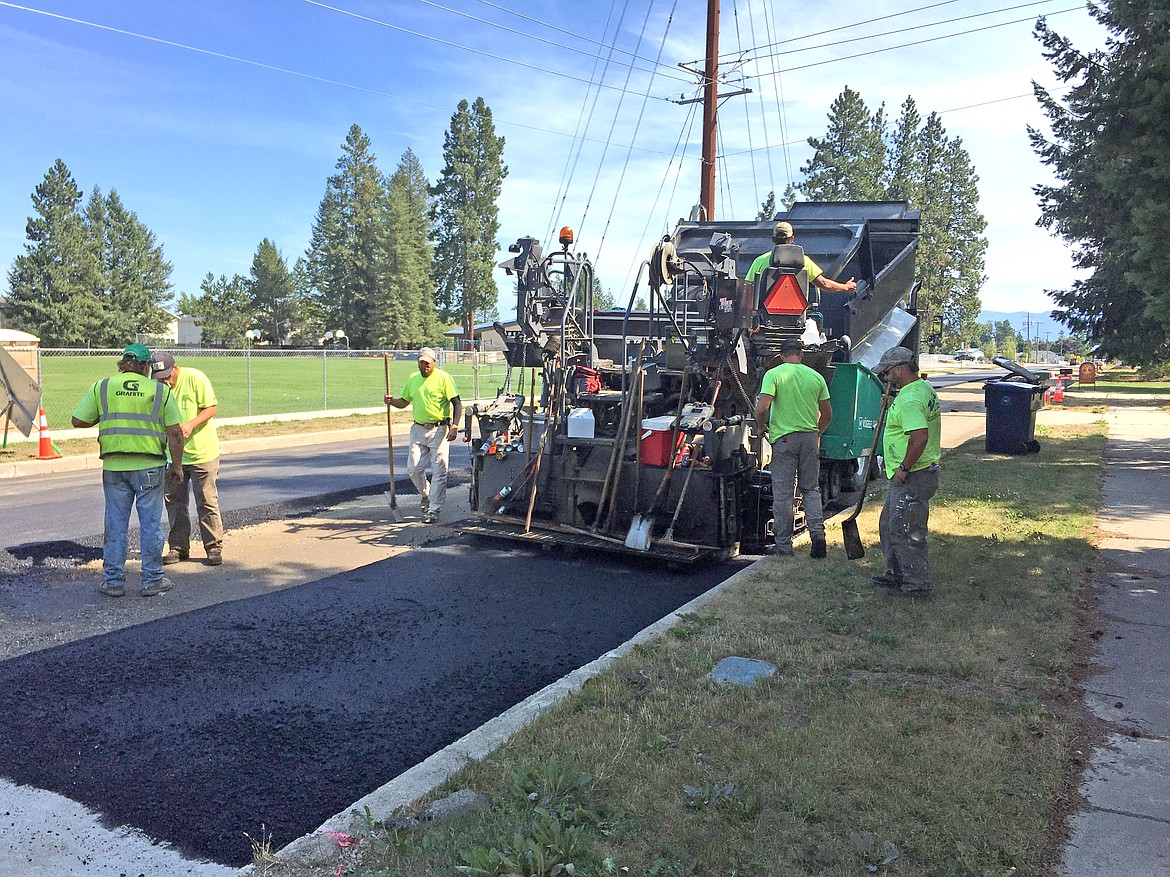City asks voters to OK 'tourist tax' increase
▶️ Listen to this article now.
SANDPOINT — If city voters approve a local option tax on visitor lodging when they head to the polls on Tuesday, Sandpoint officials say they can finally accomplish a number of long-sought street projects.
If voters approve the measure, the city's existing tourist tax would be extended to Dec. 31, 2035, and would increase from 7% to 14%.
A supermajority of 60 percent is required for the measure to pass.
The proposed "tourist tax" is applicable only for lodging stays of 30 days or fewer at hotels, motels and vacation rentals within the city limits.
The additional 7% sought by the city would only fund street and pedestrian projects. The existing 7% tax will continue to fund public safety, parks and other infrastructure improvements, Sandpoint City Administrator Jennifer Stapleton said.
The increase would put the city roughly in line with the national average. According to a 2019 study published by the American Hotel and Lodging Association, the average tax on lodging is 13.5%, with several cities now charging over 20%, particularly in cities that are a significant tourist destination.
If approved the proposed tourist tax increase would go into effect on Jan. 1, 2023.
The need to address the declining condition of city streets and sidewalks has been apparent for some time, city officials said at an October council meeting. The long-standing question has been how to pay for those improvements.
Over the past few years, the Sandpoint City Council has doubled the annual budget for pavement maintenance and reconstruction to $500,000 per year, with funding coming primarily through local property taxes.
The local budget has also been increased for sidewalk and pathway projects, Sandpoint officials said.
"Even with this increase, more funding sources are needed to increase the investment in street pavement and sidewalk projects to recommended levels and prevent more streets from reaching poor/very poor or failing condition," officials said on the website.
Like the rest of Idaho, growth in Sandpoint has skyrocketed in the past several years. Sandpoint officials said the city's growth rate has, and is projected to continue at 2 1/2 times its historic growth rate.
"In addition to increased home prices, this is affecting our infrastructure and we are not able to keep up with those impacts," Sandpoint officials said. "Like all local jurisdictions across the state, Sandpoint is dependent on local property taxes and fees to keep up with the demand."
All remaining tax revenues collected – including personal and business income taxes, capital gains taxes, gas taxes and sales taxes – flow to the state and are controlled by the governor and Legislature. Only a small percentage of sales tax revenue (11.5%) gets sent back to local jurisdictions, city officials said.
In 2014, Sandpoint voters approved a resort city local option tax of 7% on lodging on any short-term room occupancy for each hotel-motel room rented or leased within the city.
Stapleton said the current tax began Jan. 1, 2015, and is scheduled to sunset Dec. 31, 2025. Revenues raised by this tax are used primarily to benefit public safety services, public parks operations such as the City Beach Lifeguard Program and the SPOT Bus service.
City officials said current lodging taxes received average nearly $600,000 per year. A majority — about 60% — used to come from hotels/motels with the remainder from permitted short-term rental properties. In the past two years, short-term rental properties have accounted for over 50% of the revenues and the taxes generated by hotels/motels decreasing to less than half.
The city's transportation system includes approximately 102 lane miles of streets, with a replacement value of more than $86 million.
"Even with proper maintenance, streets deteriorate and eventually need repair," Sandpoint officials said on the city's website. "Signs of wear and distress include rutting, cracking, and potholes."
If voters approve the ballot measure, they said they'd be able to begin whittling away at a backlog of paving projects and other street repairs.
Among the projects are reconstruction of Cedar and Fir streets and sidewalk connectivity on Larch, Oak, Ella and Fourth. In addition, sidewalk connectivity to Washington Elementary, Sandpoint Senior Center and accessibility improvements in the downtown core will be completed, officials said.
Projects were identified as part of the city's Multimodal Transportation Master Plan. While the plan found that the pavement conditions of city streets are within the national average, Sandpoint has a backlog of pavement projects for streets in very poor or poor condition of 21% — double the national average.
The report recommended the city’s annual investment in street pavement projects needs to increase to over $1 million per year to avoid further increasing that backlog, officials said. The MTMP also includes a pedestrian priority network improvement program which identifies accessible improvements needed to existing sidewalks and paved pathways and extension needs to complete the network, officials said.
If voters reject the ballot measure, city officials said the current local option tax will end Dec. 31, 2025.
"Funding for street and pedestrian improvements will continue to fall short unless grant dollars are obtained or future ballot measures are passed by voters," officials said. "Additionally, existing funds for public safety, parks, and other improvements will be reduced when the current local option tax ends."
Information: bit.ly/3FIupOW

